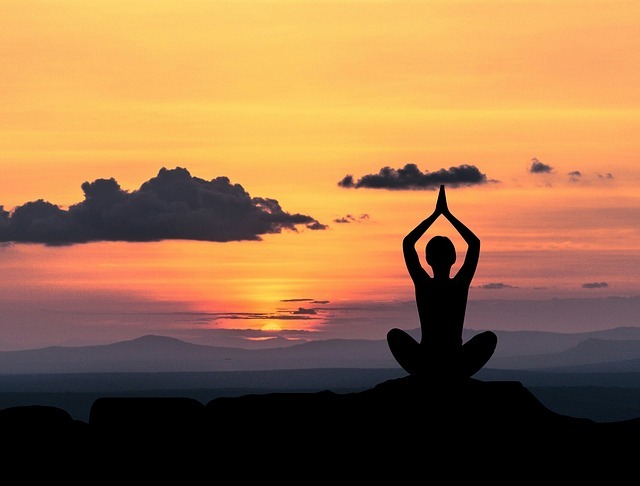Meditation is both a mind and body practice that focuses on the interaction between the brain, mind, body, and behavior. While there are numerous types of meditation, the common thread amongst them all tends to be an enhanced focus that trains attention and awareness.
Most types of meditation also have the following aspects in common: A quiet spot with limited distractions; a comfortable posture (i.e. sitting, lying down, etc.); a focus of attention (i.e. sensations of breathing, a set of words, etc.); and an open mind that allows distractions to come and go without judgment (National Center for Complementary and Integrative Health, 2016).
The practice of mediation has been shown to increase calm, enhance relaxation, improve psychological balance, and enhance overall health and well-being.

10 Types of Meditation
Reflection: Reflection involves asking yourself questions as a means of developing greater awareness of feelings. Questions asked should be asked in the second person (you) as a means of discouraging the intellectual mind from trying to develop a rational answer for it. The goal is to become more aware of how the question makes you feel as opposed to the thoughts that arise when the question is focused on.
Transcendental Meditation: This practice of meditation is taught by instructors who are trained and licensed by the Maharishi Foundation. Transcendental meditation involves sitting with eyes closed for 20 minutes twice daily and participating in the practice as instructed. These twice-daily sessions are generally practiced as morning meditation and a mid-afternoon or early evening session.
Visualization: Visualization involves picturing a person or a thing in your mind. The focus on the particular object or person replaces the traditional focus in meditation on breathing or elements of breath. It is via the process of visualization that one is able to observe the mind and focus on physical sensations simultaneously.
Body Scanning: The practice of body scanning is performed by doing a mental scan from the top of the head to the bottom of the toes. Attention is brought to any tension, discomfort, or aches/pains that may be present. This technique helps to sync the mind and the body.
Mantra Meditation: Somewhat similar to focused attention meditation, mantra meditation involved focusing on a mantra (a word, phrase, or syllable) as opposed to focusing on the breath as a means to quiet the mind. The objective being that repeating a mantra can influence positive change via the subtle vibrations connected to repeating the mantra.
Resting Awareness: This is the practice of letting the mind rest instead of a focus on breath or visualization. When practicing resting awareness thoughts can enter the mind but are also able to drift freely away without causing a distraction.
Yoga Meditation: Yoga meditation tends to blend Kundalini yoga with Savasana. Kundalini yoga is aimed at strengthening the nervous system as a means of better coping with daily stress and problems. Shavasana, known as the corpse or relaxation pose, is used to help the body achieve relaxation and tension release. Via the implementation of various poses and intense focus on those poses, one is able to connect the mind and body for the better.
Noting: The technique of noting involves paying close attention to what is causing a distraction to the mind. It’s about “noting” particular thoughts or emotions that we are so caught up in that we’ve lost awareness of the object we are supposed to be focusing on. Noting the distraction helps us to restore awareness, create space from the distraction, release the distraction, and gain insight into our thought patterns, tendencies, and conditioning.
Zen Meditation: Zen meditation is an ancient Buddhist tradition that involves sitting upright and tracking breath. Special attention is given to how that breath moves in and out of the belly, as well as allowing the mind to simply be. The aim of Zen meditation is to develop a sense of presence and alertness.
Loving-kindness: Loving-kindness is about directing positive energy and goodwill to ourselves and then to others as a sort of ripple effect. This helps us to release unhappy feelings we might be holding onto.
Practicing meditation in any of its various forms can be beneficial to us- mind and body. Meditating well is about finding the practice that works best for you and helps you accomplish your particular goals.
